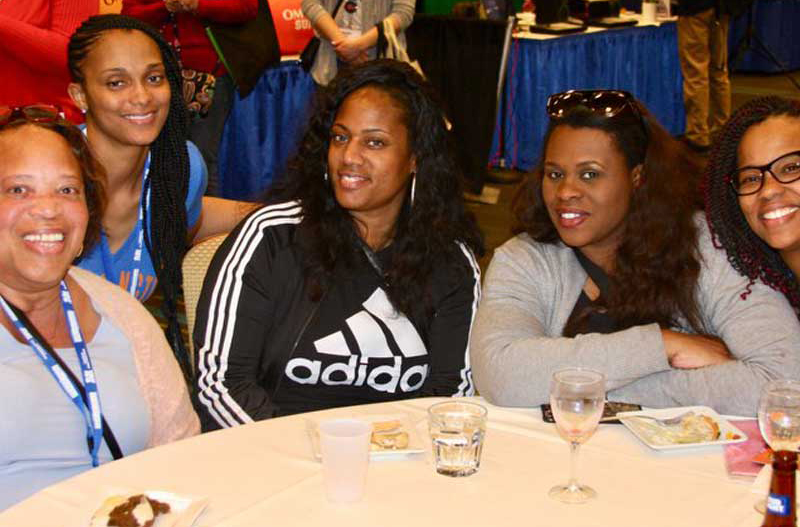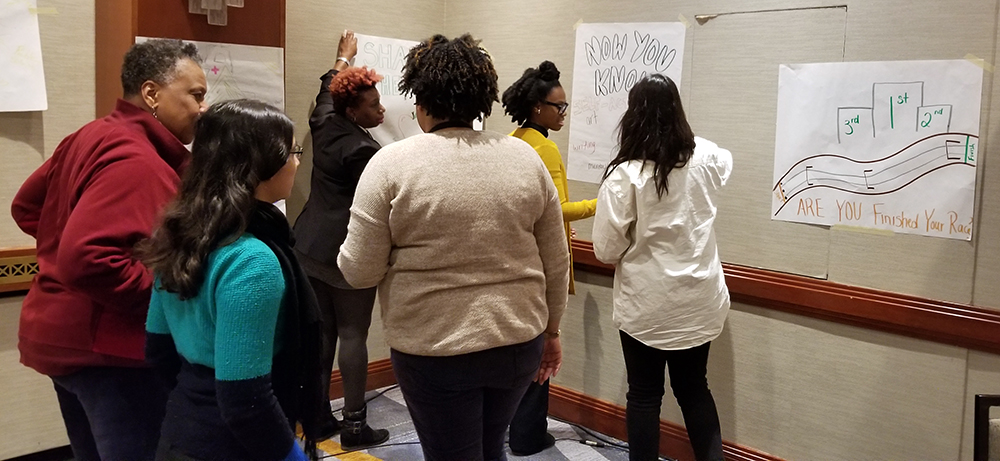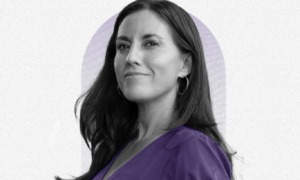
National AfterSchool Association
.
NEW YORK — Students around the world walked out of school Friday to raise awareness for climate change. This type of collective youth action is exactly what after-school professionals said they are interested in fostering in their local communities.
Leaders in after-school programming from Alaska, New Hampshire and Indiana brainstormed Sunday about how to transform youth activities into youth action at the annual National AfterSchool Association conference.
“This is perfect for everyone, if you’re working with 20 young people or if you’re working with 3,000 young people and beyond,” said Joyce Duverce, a program project manager at the New York City Department of Youth and Community Development. The common challenge in every community is that teenagers are difficult to work with, she said.
 Both Duverce and her colleague Yexenia Markland, deputy director of planning, program integration and evaluation, kicked off their presentation by sharing their own passions for youth engagement: dance. A love of dance is what drew Duverce into this line of work when she was younger and going through after-school programs. The goal is to pull the thing that kids are passionate about and channel that into change in their community, she said.
Both Duverce and her colleague Yexenia Markland, deputy director of planning, program integration and evaluation, kicked off their presentation by sharing their own passions for youth engagement: dance. A love of dance is what drew Duverce into this line of work when she was younger and going through after-school programs. The goal is to pull the thing that kids are passionate about and channel that into change in their community, she said.
One example from participants was an apprenticeship program that pairs high school students with a local hospital in Harrisonburg, Va.
“We want to raise them up to be the next set of health care professionals,” said Val Dillard, program coordinator for On the Road Collaborative. “We want them to see themselves in those places and gain experience from those that are like them.”
Community organizations and after-school providers must solicit and seek out high schoolers to learn their interests. Figuring out what they value in the world around them is the best way to engage them, Duverce said.

Avery Miles
Attendees create mock campaigns during workshop.
Authority and power of their voice
Encouraging young people to have creative authority over their own community development campaigns is what her department wants after-school providers to do, Markland said. Whether it’s a passion for writing, music or STEM (science, technology, engineering and math), students can channel their interests into bringing awareness to an issue through hands-on engagement.
While creating her own mock campaign as part of the workshop, Melissa Camarillo of Good Samaritan Community Services in Brownsville, Texas, emphasized the importance that dance and music play in her border community.
“‘Muevete, muevete’ is a popular saying in Latin music so ‘Move, Move, Shake’ seems like a good slogan to engage with our youth,” she said, as she drew musical notes and speakers with pink and gray colored markers.
The Texas Community Youth Development Program gave Camarillo’s organization a five-year contract that has helped create programming on youth leadership, character development and setting students on a college path. It currently serves more than 900 young people.
The contract was based on research on Brownsville’s juvenile crime rate. “We are really trying to reduce these kids from doing these risky behaviors,” Camarillo said.
Tapping into teens’ passions is only the first step in increasing their civic action, Markland explained. They also need to be aware of local policies and politicians, and the organizers who can help them make and strengthen those connections. Through social media, young people already have a voice among their followers. So it’s about helping them understand the power of their voice and how best to use it, she added.
Duverce would also like to see more efforts toward professionalizing after-school staff so more people understand in college that this is a viable career path.
Meeting so many different after-school providers from so many different communities was insightful, Markland said. “That shared learning is tremendous to me,” she said.






























